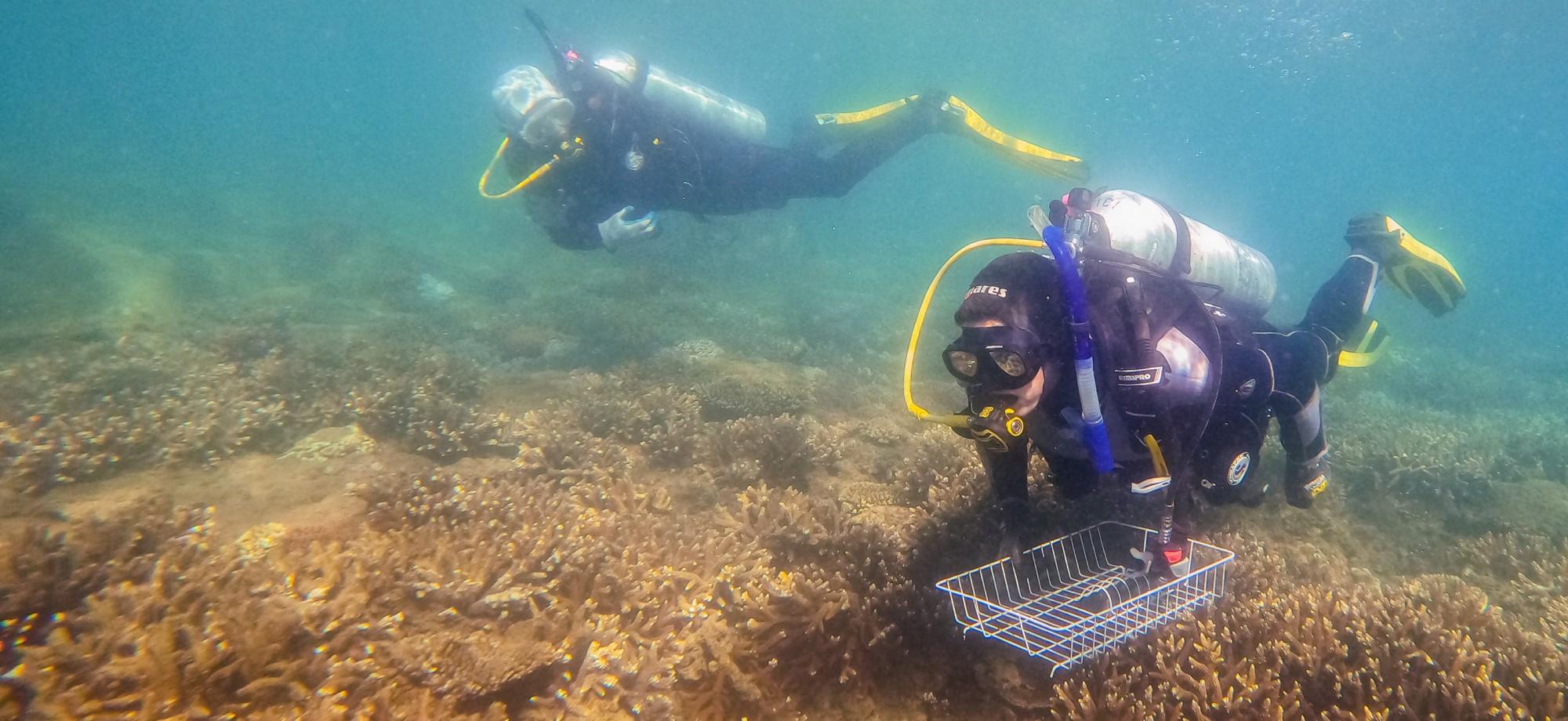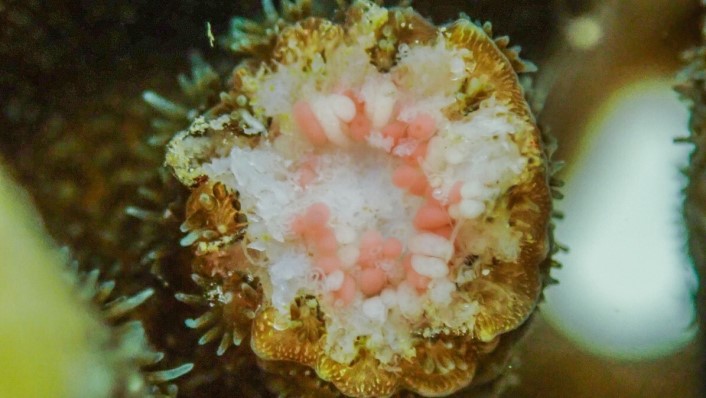After a successful year spawning and culturing corals onboard a floating laboratory in 2022, the Woppaburra Coral Project team are returning to the field in 2023 to build on their knowledge of coral spawning in this region.
Synchronicity of coral spawning
Successful fertilisation of coral eggs requires that coral colonies synchronise their spawning. The corals must, release egg and sperm bundles at about the same time so that sperm can fertilise the eggs . Corals use a complex set of cues to help colonies of the same species achieve this synchronicity, including water temperatures, moon phases and the timing of sunset and the moon rising.
During spawning season, AIMS scientists typically collect wild coral colonies and bring them to the National Sea Simulator at AIMS where corals are spawned and cultured for experiments. However it is unclear whether this process of collection, transportation and aquarium spawning impacts the ability of coral colonies to synchronise their spawning.
To investigate this, the team will halve a small number of coral colonies in the field, transporting half to the SeaSim via plane, with the other half remaining on the reef. Scientists will observe colonies in the SeaSim and in the field to see whether the exact timing of spawning in these two environments differs.
The team will also observe the timing of spawning of other coral species in the field. This knowledge will be used in future years of Keppel coral spawning and will assist in ensuring our collections minimise any impacts on spawning synchrony and offspring quality.
Natural recovery potential
When assessing the ‘when’, ‘where’ and ‘how’ of reef restoration projects, it’s important to understand the supply of coral larvae in the area, and the reef’s natural ability to re-seed itself. This information can ensure future restoration projects are targeted to areas which need the most help.
This year, the WCP team are investigating the natural ability of reefs in Woppaburra sea Country to recover via sexual reproduction. Before mass spawning, the team placed terracotta tiles on the reef. These tiles become reef-like surfaces which attract coral larvae to settle.
After a few months, the team will collect the tiles to count and identify the corals that have settled.
Researchers
Christine Giuliano
This research is supported by:
The Woppaburra Coral Project is part of the Australian Coral Reef Resilience Initiative, and a partnership between AIMS, BHP and Woppaburra Traditional Custodians.


